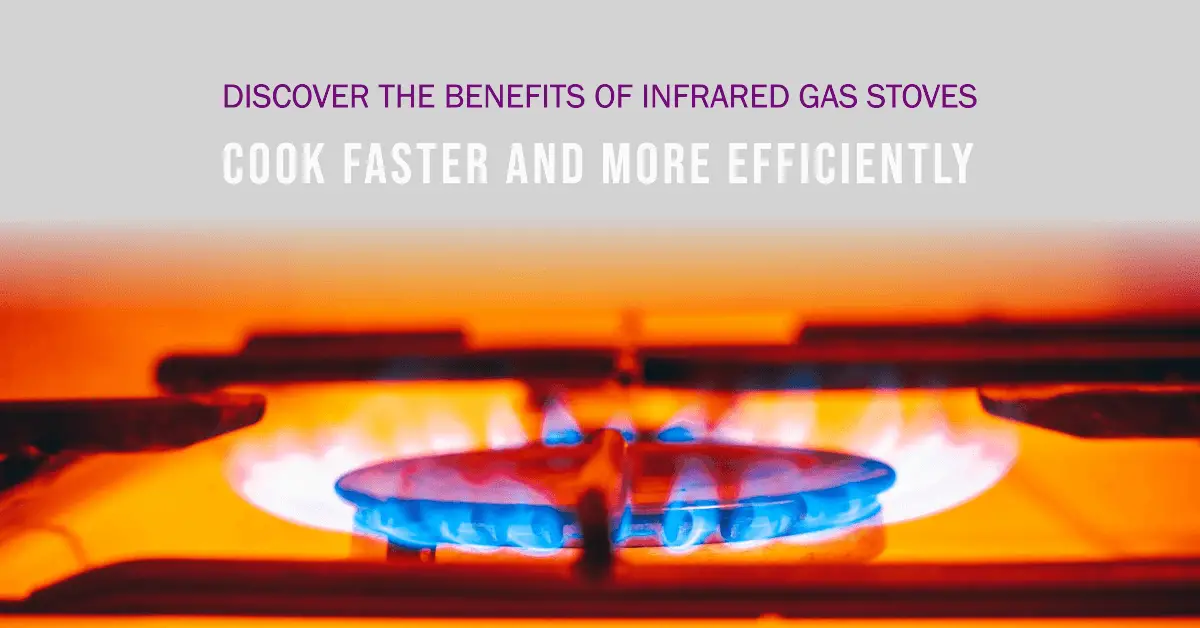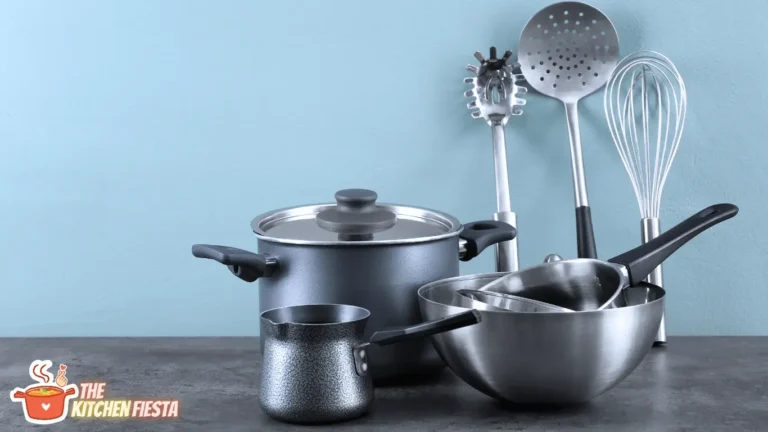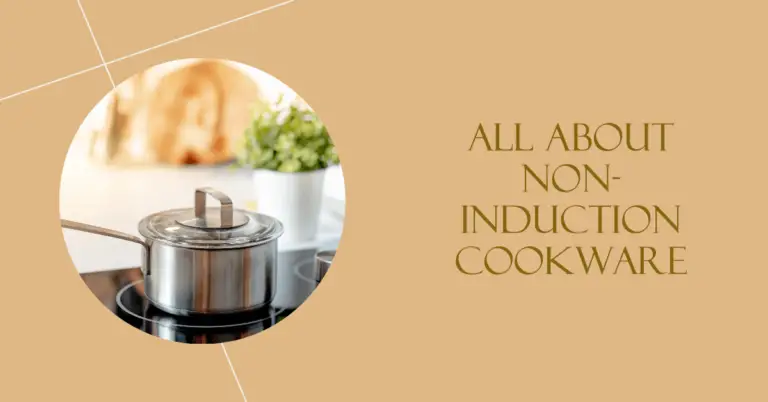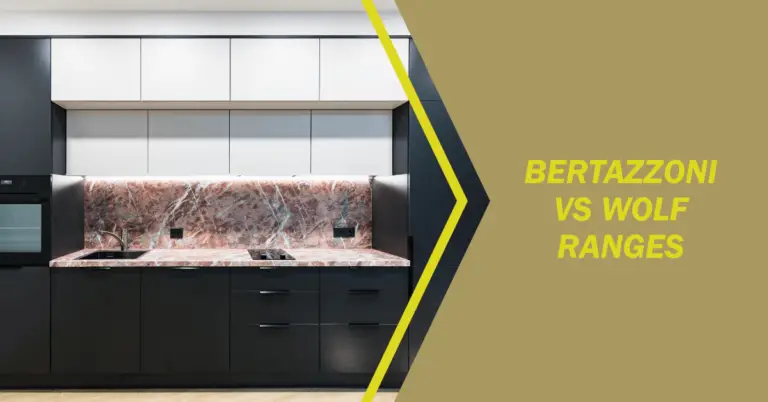What is an Infrared Gas Stove? Complete Guide

Have you ever wondered what makes infrared gas burners different than traditional gas stoves? If so, you’ve come to the right place!
In this detailed guide, we’ll cover everything you need to know about infrared gas burners, including:
- What is an infrared gas burner?
- How do infrared burners work?
- What are the benefits and advantages of infrared burners?
- Are there any downsides to consider?
- How to choose the best infrared gas burner
Infrared gas burners provide faster cooking times, more even heat distribution, enhanced safety and easier cleanup – but are they the right choice for your kitchen?
By the end of this guide, you’ll understand exactly what makes infrared gas burners tick, their incredible features and benefits, and whether investing in one is worthwhile for your cooking needs.
Let’s get started!
What is an Infrared Gas Burner?
An infrared gas burner is a special type of stove burner that uses infrared radiation to transfer heat directly to food. This makes them different than traditional gas burners, which rely on the convection heating of a visible gas flame.
Instead of an open flame, infrared burners use a ceramic heating element or coil that emits a beam of electromagnetic radiation in the infrared spectrum. This infrared energy is absorbed directly by the food, resulting in very fast heating times.
Infrared burners allow you to precisely control the cooking temperature. By adjusting the gas valve, more or less infrared energy is emitted from the heating element to control the intensity of the heat. This level of temperature control rivals professional restaurant burners!
How Do Infrared Gas Stove Burners Work?
While traditional gas burners use a gas flame to indirectly heat a pot or pan, infrared burners take a entirely different approach:
- Gas flows into the infrared burner and is ignited by an electric ignition system.
- The gas combustion causes the ceramic heating element to glow red hot, like the coils of an electric stove.
- This heating element emits a beam of infrared energy, an invisible form of electromagnetic radiation.
- When infrared waves strike food, they vibrate the food’s water molecules, instantly transferring heat for rapid cooking.
- The infrared waves heat the food directly without heating the surrounding air, unlike a gas flame. This results in very fast, concentrated heating.
- Adjusting the gas valve increases or decreases the infrared output for precise temperature control.
In summary, the key difference is that infrared burners use radiant infrared energy rather than hot air convection to transfer heat directly to the food. This allows for precise, rapid heating in ways not possible with traditional gas flames.
What Are the Benefits of Infrared Gas Burners?
Infrared gas burners provide a number of compelling advantages over standard range burners:
- Faster cooking times – Infrared rays strike food instantly, bypassing the air. This allows infrared burners to heat food dramatically faster than regular burners.
- More energy efficient – Infrared burners focus nearly 100% of the gas combustion into usable infrared heat, while regular burners lose heat to the surrounding air. This increased efficiency allows infrared burners to use less gas.
- Even heating – Infrared waves strike food evenly across all surfaces, eliminating hot and cold spots for perfectly uniform heating.
- Minimal flare-ups when grilling – The lack of an open flame vastly reduces smoking and grease flare-ups when grilling meats.
- Enhanced safety features – Advanced gas valves and auto shut-off features detect problems before gas leaks occur. There is also less risk of accidental burns.
- Easier to clean – Infrared burners have smooth, seamless glass-ceramic surfaces that don’t trap food and grime like grates. Any spills can be wiped clean with a cloth.
With these advantages combined, infrared burners provide a faster and more controllable cooking experience for outstanding results every time. Restaurant-quality results are now possible right in your own kitchen!
How Are Infrared Gas Grills Different than Standard Grills?
Infrared burners are also popular in gas grills, offering similar benefits:
- Infrared grill burners also use a ceramic emitter that heats up and beams infrared energy onto food.
- This allows infrared grill burners to sear foods at far higher temps than normal grill burners. You’ll get perfectly seared steaks with a juicy interior.
- The radiant heat eliminates cold spots and provides very even cooking. No more undercooked or charred meat!
- Infrared grills produce minimal smoke and flare-ups from grease compared to traditional gas grills.
- Overall, infrared grill burners allow you to get far better sear marks while cooking food more evenly and precisely. Your grilling results go to the next level.
So in summary, the infrared radiation allows both stovetop and grill burners to produce intense, even heat for superior cooking control.
Are There Any Downsides to Infrared Burners?
While infrared burners have fantastic benefits, there are a few potential drawbacks to consider:
- Higher upfront costs – Quality infrared burners cost significantly more than standard range burners. Expect to pay $100-300 more per burner.
- Increased ventilation needs – The intense heat output requires greater ventilation. Your range hood needs a higher CFM rating.
- Not compatible with all cookware – The burners work best with flat-bottom pans that make direct contact. Some cookware like woks may not work well.
- Adjustment period – It takes practice to get used to the rapid boiling and precise control. Be ready for a learning curve!
However, for most cooking enthusiasts, the advantages far outweigh these relatively minor drawbacks. Additionally, the increased capabilities and efficiency of infrared burners can make them worth the higher initial investment over time.
How to Choose the Best Infrared Gas Burner
When shopping for an infrared burner, keep the following tips in mind:
- Look for a ceramic emitter for more even heating and durability. Coil emitters tend to have hot spots.
- Seek out advanced safety features like auto shut-off, gas leak detection and residual heat indicators.
- Choose between single or multi-ring burners. Multi-ring burners allow for more cooking area.
- Make sure the burners have adequate BTU ratings for the heat output you need. Higher BTUs allow for faster boiling.
- Consider a model with zone heating so you can toggle between low and high intensity from a single burner.
- Opt for sealed burners that are sleek and flush with the cooktop for easier cleaning.
- For grills, go for ceramic infrared over tube infrared for more durability and even heating.
Doing your homework will ensure you select the right infrared burner to suit your cooking style and needs.
Grilling Tips for Infrared Gas Grills
If you’re new to cooking on an infrared gas grill, keep these tips in mind:
- Use the highest heat setting to take advantage of infrared searing capabilities.
- Avoid flare-ups by trimming excess fat and moving meats if grease drips.
- Turn food less frequently since infrared grills heat so evenly. Flip only once or twice.
- Get perfect sear marks by leaving food undisturbed for 2-3 minutes before flipping.
- Brush or spray oil on food rather than directly on the grates to minimize smoke points.
- Preheat your infrared grill for 10-15 minutes to reach maximum temperatures.
- Clean the ceramic element with warm, soapy water but don’t use abrasives that can damage the coating.
With a bit of practice, you’ll be able to harness the power of infrared energy to get picture-perfect sear marks and juicy, evenly cooked meats every time.
Infrared Burner Cooking Tips and Techniques
Cooking with infrared burners also comes with a learning curve. Use these pro tips:
- Start with a lower heat setting until you get the hang of the quick boil times.
- Use flat-bottomed pans like stainless steel or cast iron to ensure direct contact with the burner.
- Choose cookware with tighter lids to take advantage of fast steaming.
- Preheat pans for only 1-2 minutes before adding oil or ingredients.
- Use zone heating to keep food warm on a lower setting after searing or boiling.
- Don’t leave pans unattended – the concentrated heat can lead to scorching.
- Clean spills immediately since sugars and sauces can bake onto the ceramic element when left to dry.
With experience, you’ll master how to leverage infrared burners to deliver perfect results across various cooking methods while avoiding potential pitfalls.
Conclusion
Infrared gas burners utilize radiant infrared heat for faster, more energy efficient cooking with incredible precision. While the upfront cost is higher, the benefits for any serious home chef are undeniable.
Key advantages like reduced cook times, no cold spots, minimized flare-ups, and easier cleaning demonstrate why more and more passionate cooks are upgrading to infrared.
By understanding exactly how infrared burners differ from traditional gas ranges and grills, you can decide if transitioning to this advanced burner technology is worth the investment for your needs.
If maximizing cooking performance is a priority in your kitchen, then the powerful cooking capabilities of infrared gas burners will absolutely take your culinary game to new heights!





